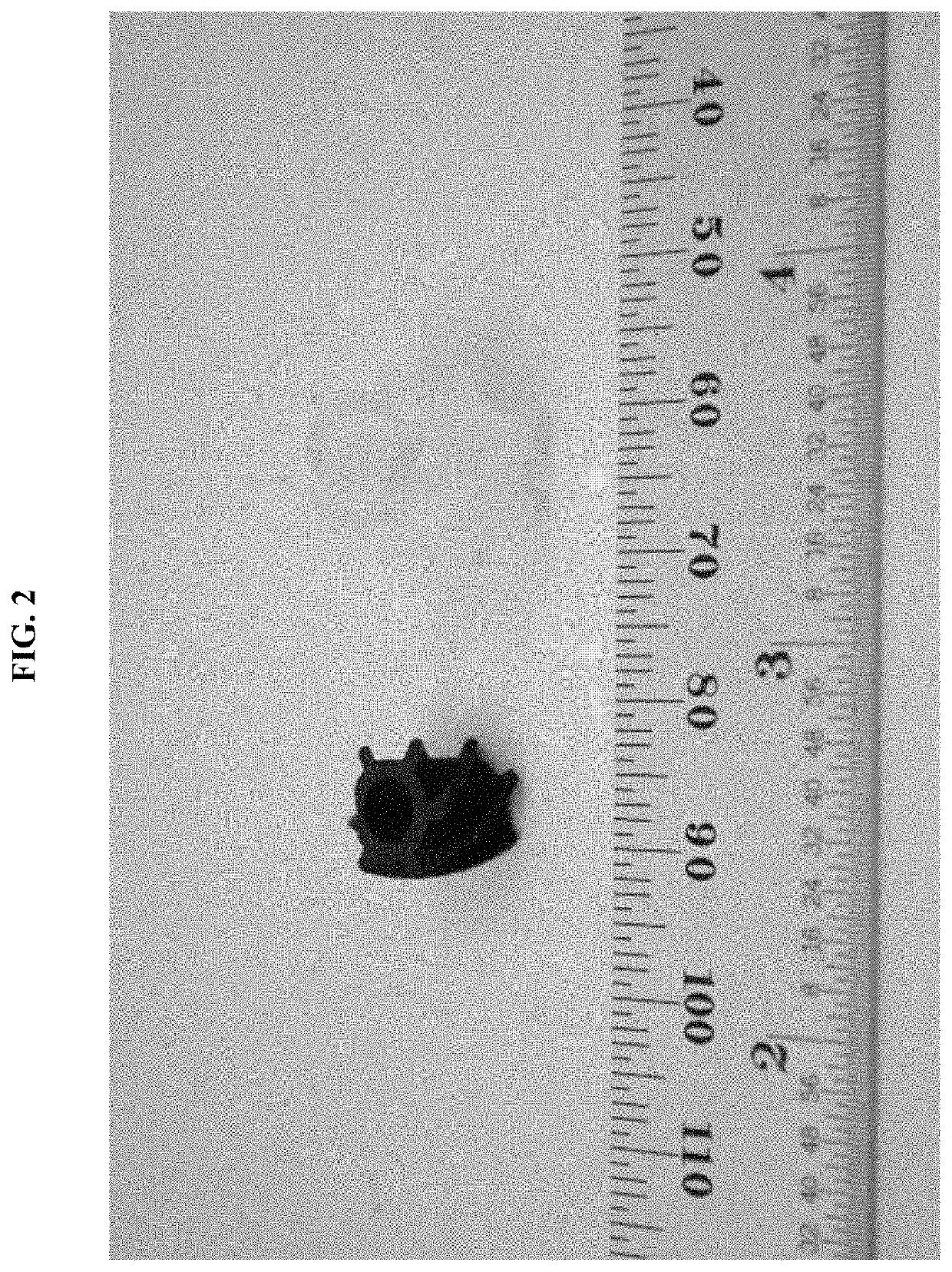Preceramic 3d-printing monomer and polymer formulations
a 3d printing and monomer technology, applied in the field of monomer formulations, can solve the problems of low fracture toughness, limited thermal shock resistance, brittle failure, etc., and achieve the effect of reducing resin viscosity and improving the crosslink density of polymers
- Summary
- Abstract
- Description
- Claims
- Application Information
AI Technical Summary
Benefits of technology
Problems solved by technology
Method used
Image
Examples
example 1
on of 3D-Printing Composition for SiC / SiOC UV-Cured Ceramic Matrix Composite
[0266]A monomer mixture containing 100 parts of vinylmethoxysiloxane polymer, 100 parts of (mercaptopropyl)methylsiloxane polymer, 0.5 parts of 2,2-dimethyl-2-phenylacetophenone, 0.15 parts of tert-butylhydroquinone, and 0.25 parts of 2,2′-(2,5-thiophenediyl)bis(5-tert-butylbenzoxazole) (all parts by weight), is thoroughly blended to make sure the components are well-mixed and the mixture is a uniform system. This resin is capable of forming a silicon oxycarbide (SiOC) ceramic phase when polymerized and thermally treated.
[0267]Then 25% by weight silicon carbide (SiC) powder with 50 μm particle size is blended and sonicated to disperse the SiC particles into the above resin. The SiC microparticles serve as solid-phase fillers in the SiOC-forming resin. The mixture is then ready for use as a monomer formulation in UV-cured 3D printing.
[0268]Optical microscope images of SiC solid-phase fillers dispersed in the ...
example 2
n of 3D-Printed, UV-Cured SiC / SiOC Ceramic Matrix Composite
[0269]The monomer formulation of Example 1 is 3D-printed and UV-cured, followed by thermal treatment to form a ceramic matrix composite. Bulk parts are demonstrated by curing layers at 385 nm with LED-UV to form a preceramic polymer, and then pyrolyzing the preceramic polymer at 1000° C. in inert atmosphere to form a pyrolyzed ceramic material. FIG. 2 shows a photograph of the preceramic polymer (right-hand side) and the darker pyrolyzed ceramic part (left-hand side).
[0270]FIG. 3 is a graph of thermogravimetric analysis for the pyrolysis of the UV-cured preceramic polymer into a pyrolyzed ceramic material, measuring the loss of sample mass over time as the pyrolysis temperature increases.
example 3
n of Preceramic Polymer Composition Comprising Acrylate-Functionalized Polycarbosilane
[0271]Allylhydridopolycarbosilane, 77 grams, is combined with acrylic acid, 23 grams, to form a reaction mixture in a container. The reaction mixture is stirred under argon at a reaction temperature from 20° C. to 80° C. for a reaction time from 1 hour to 48 hours (with an inverse correlation between reaction temperature and reaction time). The result of the reaction is a UV-reactive, acrylate-functionalized polycarbosilane preceramic polymer.
[0272]A polymerization initiator, such as benzophenone, may be added to the initial reaction mixture or to the acrylate-functionalized polycarbosilane, in a concentration of about 1 wt % to 2 wt %, and stirred until dissolved or suspended.
[0273]A free-radical inhibitor, such as hydroquinone, may be added to the initial reaction mixture or to the acrylate-functionalized polycarbosilane, in a concentration of about 0.001 wt % to 1 wt %, and stirred until dissolv...
PUM
| Property | Measurement | Unit |
|---|---|---|
| vol % | aaaaa | aaaaa |
| wavelength | aaaaa | aaaaa |
| TG | aaaaa | aaaaa |
Abstract
Description
Claims
Application Information
 Login to view more
Login to view more - R&D Engineer
- R&D Manager
- IP Professional
- Industry Leading Data Capabilities
- Powerful AI technology
- Patent DNA Extraction
Browse by: Latest US Patents, China's latest patents, Technical Efficacy Thesaurus, Application Domain, Technology Topic.
© 2024 PatSnap. All rights reserved.Legal|Privacy policy|Modern Slavery Act Transparency Statement|Sitemap



